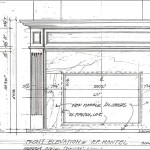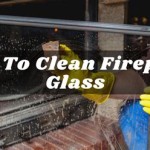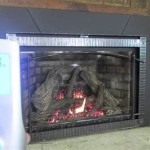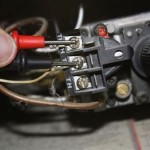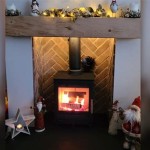Understanding Fireplaces with Gas Logs
Fireplaces with gas logs offer a convenient and aesthetically pleasing alternative to traditional wood-burning fireplaces. They provide the ambiance of a real fire without the associated mess, effort of procuring and storing firewood, and the potential safety hazards of open flames and smoke. Gas log sets are designed to mimic the appearance of natural wood, enhancing the visual appeal of a fireplace while utilizing clean-burning gas as a fuel source.
These systems are typically installed within existing masonry fireplaces or prefabricated fireboxes, converting them into efficient and easily controllable heating sources. The installation process often involves connecting the gas log set to a natural gas or propane line and ensuring proper ventilation. Understanding the different types of gas log sets, their installation requirements, and maintenance needs is essential for homeowners considering this option.
Types of Gas Log Sets
Gas log sets are broadly categorized into vented and vent-free (or ventless) options, each with distinct characteristics and operational requirements. The primary difference lies in how combustion byproducts are managed.
Vented gas log sets are designed for use in fireplaces with a functioning chimney. These sets produce realistic flames and glowing embers, closely resembling a natural wood fire. However, a significant portion of the heat generated escapes up the chimney along with the exhaust gases. Therefore, vented gas log sets are primarily for aesthetic purposes rather than efficient heating. They require the fireplace damper to remain fully open during operation to ensure proper ventilation and prevent the buildup of carbon monoxide. This continuous ventilation, however, significantly reduces heat retention within the room.
Vent-free gas log sets, on the other hand, are designed to operate without a functioning chimney or with the damper closed. They are engineered to burn cleanly, emitting minimal levels of carbon monoxide, making them suitable for supplemental heating. These sets typically include an Oxygen Depletion Sensor (ODS), which automatically shuts off the gas supply if oxygen levels in the room become dangerously low. Vent-free gas logs are more energy-efficient than vented sets since the heat remains within the room. However, they may produce a slight odor during operation, and some individuals may be more sensitive to the byproducts. It’s crucial to strictly adhere to the manufacturer's instructions regarding room size and ventilation requirements for vent-free gas log sets.
Installation Considerations
Installing a gas log set is a complex process that should ideally be performed by a qualified professional. Whether choosing a vented or vent-free set, proper installation is paramount for safety and optimal performance. The following steps outline the general procedure:
Preparation: The existing fireplace must be thoroughly cleaned and inspected for structural integrity. Any necessary repairs should be completed before proceeding. The gas line must be checked for leaks and proper pressure. A gas shut-off valve should be easily accessible.
Gas Line Connection: A gas line extension may be required to reach the location of the gas log set's burner. This connection must be made by a licensed gas fitter according to local codes and regulations. Leak testing is essential after the connection is complete.
Log Placement The gas logs must be arranged according to the manufacturer's instructions. Incorrect log placement can obstruct the burner, leading to incomplete combustion and the production of dangerous carbon monoxide. The logs are typically designed with specific markings or indentations to ensure correct alignment.
Ignition System Gas log sets typically employ either a manual pilot light, an electronic ignition system, or a millivolt system. The ignition system must be properly installed and tested to ensure reliable starting and safe operation. Electronic ignition systems often require a source of power, while millivolt systems generate their own electricity using a thermocouple.
Ventilation: For vented gas log sets, the damper must be permanently propped open to the required opening size as specified by the manufacturer. This ensures adequate ventilation and prevents the buildup of dangerous gases. Vent-free sets require adequate room ventilation, as specified by the manufacturer, to minimize the risk of oxygen depletion.
Maintenance and Safety
Regular maintenance is crucial for ensuring the safe and efficient operation of a gas log fireplace. Neglecting maintenance can lead to potential hazards and reduced performance.
Annual Inspection: A qualified professional should inspect the gas log set annually to check for gas leaks, burner obstructions, and proper ventilation. They should also inspect the Oxygen Depletion Sensor (ODS) in vent-free models to ensure it is functioning correctly. Addressing any issues promptly is essential for safety.
Cleaning: The gas logs should be cleaned periodically to remove dust and debris that can accumulate over time. Use a soft brush or vacuum cleaner to gently remove any deposits. Never use water or cleaning solutions, as they can damage the logs and affect their appearance.
Carbon Monoxide Detectors: Install carbon monoxide detectors in the vicinity of the fireplace and on every level of the home. Test the detectors regularly and replace the batteries as needed. Carbon monoxide is a colorless, odorless, and deadly gas. Detectors provide an early warning in case of a malfunction or incomplete combustion.
Proper Operation: Always follow the manufacturer's instructions for operating the gas log set. Never leave the fireplace unattended while it is burning. Ensure that the damper is properly positioned (open for vented sets, closed for vent-free unless otherwise specified). Supervise children and pets around the fireplace to prevent accidents.
Professional Consultation: If you experience any problems with your gas log set, such as unusual odors, flickering flames, or difficulty starting, consult a qualified professional immediately. Do not attempt to repair the system yourself unless you are a trained and licensed technician.
By understanding the different types of gas log sets, the installation process, and the importance of regular maintenance, homeowners can enjoy the warmth and ambiance of a fireplace with greater peace of mind. Prioritizing safety and following best practices are essential for ensuring the long-term performance and safe operation of a gas log fireplace system.

Napoleon Gl28 Reversible Vented Gas Log Set 28 Inch

Napoleon Gl18e Vented Gas Log Set 18 Inch

Vented Gas Logs Heater Or Decorative Bart Fireside

The Best Gas Log Sets For 2024 Fireplaces Direct Learning Center

Procom 18 In Vented Natural Gas Fireplace Log Set 210016 The Home Depot

Chicago Gas Fireplace Logs Conversion Installation

Gas Logs The Flame Company Greensboro Graham Burlington

How Do Gas Logs Work Hocon

Napoleon Reversible Vented Gas Log Set Logs Stove Hearth Patio
:max_bytes(150000):strip_icc()/ventless-gas-fireplaces-4160746-hero-f9d4bdcd9bd446eb84406de306f790ba.jpg?strip=all)
How To Pick Out A Ventless Gas Fireplace
Related Posts


